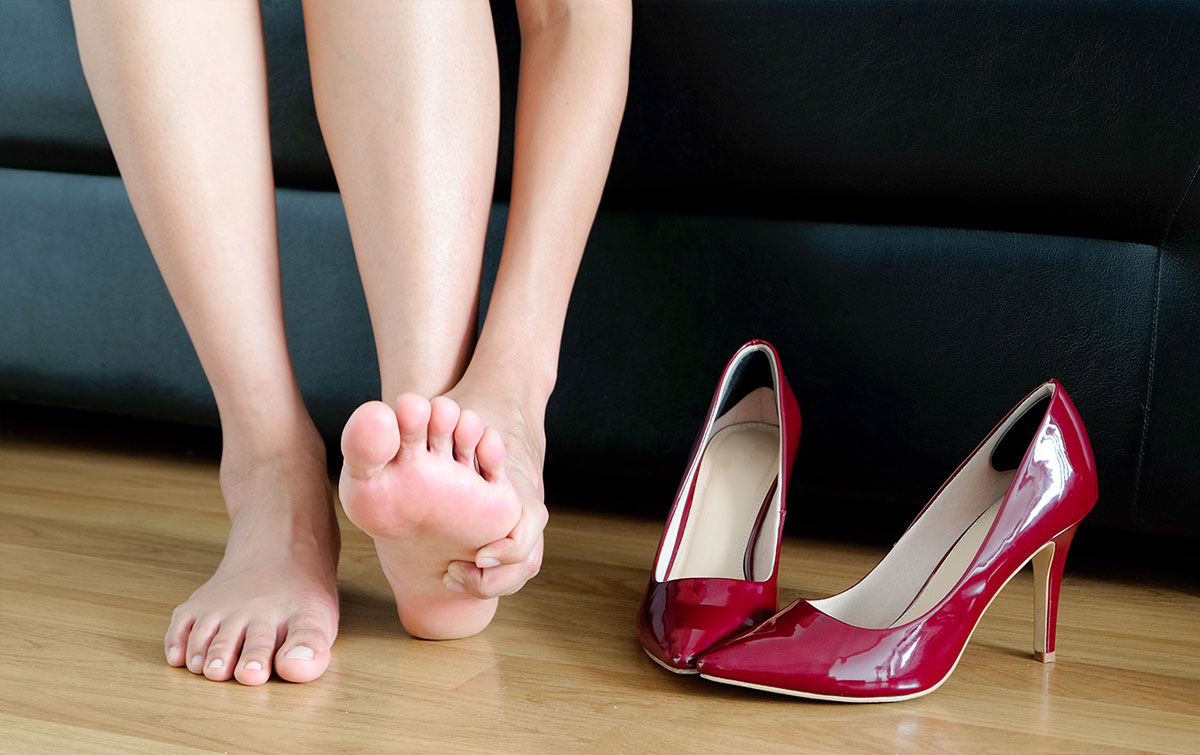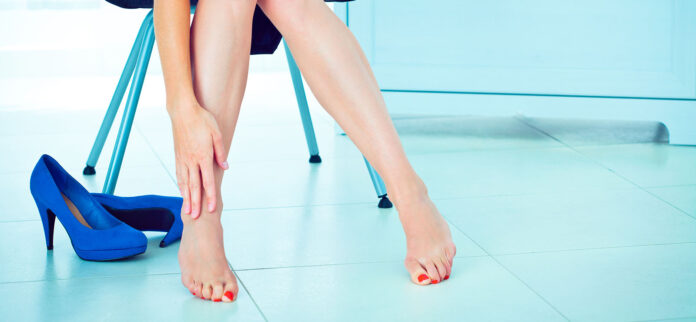Heels are the most popular shoes on the market. They have been used for years in various areas, such as walking and dancing. However, they can also be very dangerous to wear if you have a foot condition such as bunion pain. In this article, we will discuss choosing comfortable heels for bunions for stable and pain-free walking.
The Soft, Wide-Toe Box
The next most important thing to look for in a shoe is a soft, wide-toe box. This will allow your toes to spread out and take up their natural shape. Too-narrow shoes can cause unnatural bending and pressure points, which may be painful. Look for elastic or adjustable fastening on the shoe, too; this will let you get an accurate fit without worrying about constant adjustment. Finally, ensure that the footbed is cushioned enough so that it doesn’t hurt your foot when you wear it all day long!
Rounded Or Square Toe
If you have bunions, rounded toes are typically better than square ones. This is because a rounded toe will take pressure off of the bunion area.
Square toes are better for people who have hammertoes. A square toe allows for more room in this type of shoe, so it won’t cause pain or discomfort.

A rounder toe is also best if your foot has a high arch since it helps keep your foot from sliding forward in the shoe as much as it would with a flatter profile (which can cause blisters). If you have low arches or flat feet, then go with more support and stability around the ball/toe area to avoid having any pain while wearing them day after day over time.
Little To No Pointed Shape
Pointed heels can cause blisters, so if you’re prone to that thing and want something a little more comfortable, look for round or oval-shaped heels. They are better for the bunion area and will not put as much pressure on your foot.
In addition, people with arthritis in their feet or other foot problems may find pointed heels a little too painful. If this is the case for you, it’s best to avoid pointed shoes altogether because they can aggravate existing medical conditions like bunions or plantar fasciitis (heel pain).
Stable Heel Counter
A good pair of heels should have a stable heel counter for anyone with a bunion. A stable heel counter does not collapse when you walk, meaning that it’s reinforced with sturdy material and padded for comfort. The most important aspect of this feature is its flexibility: too much flexibility can make it difficult to maintain balance in the shoe, but not enough flexibility could mean having painful toes after hours on your feet.
Elastic Or Adjustable Fastening Or Straps For A Custom Fit
One of the best things about heels is that they can be worn for any occasion. Whether you’re looking for a pair of heels for work or a pair that’s perfect for a night out on the town with friends, it’s essential to find a shoe that fits your style and needs. Even if you have bunions, it doesn’t mean you can’t wear heels! With the right features in your shoe design, bunions won’t slow you down!
The first thing to consider when picking out shoes is how much flexibility they offer. Elastic or adjustable fastening straps allow you to get a custom fit without worrying about seams being too tight or loose (which could cause pain). Sturdy materials like leather also ensure that your feet won’t slip around inside their shoes while keeping them comfortable.
Open, Peep-Toe Styles That Accommodate Bunions
Open-toe shoes are perfect for people who suffer from bunions. Open-toe shoes allow your toes to spread out and prevent further damage to your big toe’s joint, which can cause a bunion. If you are wearing closed-toe shoes and notice that your big toe is beginning to angle inward or move closer towards the other toes on your foot, it’s time to switch up your style! Open-toes are also pretty comfortable, so you won’t have any issues wearing them all day long while working or going out with friends.
Extra Cushioning In The Footbed Of Heels For Bunions Is A Must!
Extra cushioning in the footbed is a feature that will help prevent painful bunion flare-ups. The padding underneath your heel and arch support can help reduce strain on your feet, especially when walking long distances or standing for long periods.
Extra cushioning in heels for bunions also helps with shock absorption, which reduces stress on your joints and muscles. This is especially important if you have other health conditions, such as osteoarthritis or plantar fasciitis.
Many different factors can cause bunion pain. For example, wearing shoes that are too tight or narrow can put pressure on the bunion and cause inflammation or irritation. Using insoles that do not provide adequate support or cushioning can also exacerbate the problem.
Closed-Toe Designs With Roomy Toe Boxes
Closed-toe designs with roomy toe boxes are the best for people with bunion feet. This type of shoe has room around the shoes, which helps to relieve pressure on your toes and joints.
Closed-toe designs are also good for people with hammer toes as they provide support while still allowing your toes to move freely. They may not be as flexible as open-toe shoes, but they’re much better than other types of footwear (like flip-flops) that can cause damage due to constant exposure to water or sand.
Wide Heels With A Low Pitch So There’s Less Pressure On The Front Of The Foot.
Comfort is key. When you’re wearing heels, the front of your foot will feel more pressure than normal. This can be uncomfortable and even painful if the shoe is too narrow or high-pitched.
Wide shoes are better for people with bunions because they have a wider toe box, making it easier to fit in smaller shoes with no heel lift. A low pitch means less pressure on the front of your foot, which reduces swelling and inflammation caused by bunions and other problems like hammertoes or hallux valgus.
Heels With Breathable Lining
The lining of your shoe is an important consideration. While it will not prevent bunions from forming, it can help to make them more comfortable once they have formed. The breathable lining helps to keep your feet dry and comfortable, which makes wearing the shoes longer and more bearable. Some shoes even have a mesh lining that allows your feet to breathe while keeping out any items that could get stuck in the mesh, such as dirt or dust particles. The lining is usually made of polyester or nylon material and can vary depending on what type of shoe you want. Typically, athletic sneakers will have thicker materials than ballet flats do.
Conclusion
It can be a challenge if you are looking for the best shoes for bunions. However, with some research and shopping around, you should be able to find something that works for your needs. Hope this article has given you some guidance on what features are essential when shopping for shoes with bunion problems!
Related Websites
Articles on Intellectblogs
Articles on Blogseu
Articles on Blogspeoples
Articles on Thebigblogtheory
Articles on Allcityforums
